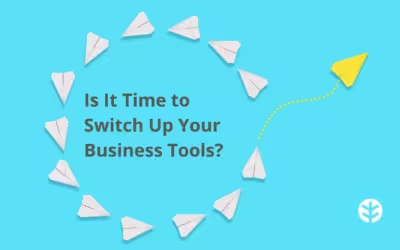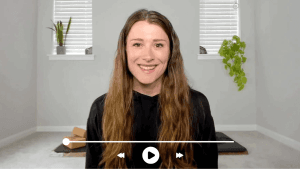Let’s talk about refreshing what you offer. Continuing education is a necessary part of the wellness industry – keeping abreast of advances in science and research is what keeps us inspired and motivated as professionals. As well as ticking a box for your governing body, continuing education enables us to keep growing, sometimes even moving into a more specialized or niched field as a result.
Putting your continuing education into practice, however, can sometimes feel like a big step. Perhaps you’re comfortable where you are, offering the same services to clients. Perhaps you feel that you are not enough of an ‘expert’ yet to relay the information that you have learnt back to your client base. Maybe you worry that your clients won’t be open to receiving new services from you – new dance styles, different class sequences, more specialized services. It can feel risky, challenging, and often it feels easier to just tuck that knowledge away and maybe refer back to it at a later date.
Bringing your continuing education to your audience is essential for many reasons, and sometimes saying ‘I’m not ready’ is an excuse we make avoid taking that bigger, braver step forward. In reality, you are likely as ready as you will ever be to enrich your offerings and grow as a business and as a leader in your field.
Let’s take a look at what could be holding you back, talk about some tips to keep your content fresh and how and when you should take your education to your audience without reinventing everything you do.
How To Be Ready
“The key to success is to start before you are ready”. Marie Forleo
Do you find yourself taking new trainings, enjoying them, really wanting to bring them back to your audience but then you just don’t?
Readiness is a state of mind, according to Marie Forleo, and ’action is the antidote to fear’. We couldn’t agree more. The important thing is to recognize what is holding you back and challenge it head-on; the fear of making a mistake, failing and humiliating yourself is real and it is a natural, human ‘fight or flight’ instinct. The only way to get past this is to take a brave step toward what is holding you back. Get up in front of the class, book your first client appointment, talk to friends and family about what you do – the more you address the fear, the more your nerves will subside and the more you do it, the more you will get used to doing it and feel confident in sharing it.
Hiding behind the ‘not ready’ excuse will not push you forward, it will only keep you in place and staying in place can cause stagnation, which can be relayed to your clients. So while you don’t need to reinvent everything you do each time you complete a new continuing education module or learn about new techniques in your profession, you can blend the new things you learn into your business in subtle and informative ways as you grow and learn along the way.
Dealing with Imposter Syndrome
“Imposter syndrome is a psychological condition characterized by persistent doubt concerning one’s abilities or accomplishments accompanied by the fear of being exposed as a fraud despite evidence of one’s ongoing success.” Merriam Webster.
Let’s take a moment to talk about imposter syndrome, which can sometimes be hiding behind our lack of motivation or confidence. If you have ever stood at the front of a class of students and felt that you had no right, authority or knowledge to be there, then you have experienced imposter syndrome. And in the wellness industry where so many of us are solo-preneuers with no work colleagues to support our daily decisions, it can be even more difficult to quiet that voice.
Below are some tips that can help in moments of self-doubt:
~ Take some time to wind down after your day and create space to consider the reasons why you chose your career path, and why you are good at it.
~ Take pride in your wins, no matter how small they might be. Make a note of them, talk about them to clients and to friends. Reaffirm them.
~ Try to avoid comparison; remember that your clients choose you because you are you. They want what you bring to the table.
How To Share What You Know
If you feel that jumping right in to offer a course on your new skill-set is too big of a step to take, start off with smaller steps; create some content to share, start talking about your topic to gauge interest, maybe create a freebie to add into your sales funnel
A good place to start is to think about your ‘elevator pitch’ – how can you condense what you have learnt into a simple and short synopsis? To do this, think about the key benefits for your clients, what would interest them the most about what you have learnt. Next, is there a way to create a 5 or 10-minute daily activity for clients to practise this? And then, think of five ways over five days that you could share this with clients in your social media, emails, a blog or in a video.
Coincidentally, you have also just created a whole chunk of good content for your media channels which not only supports your clients for free but also showcases how awesome you are in your growth and development, that you want to keep providing additional services for your clients. And if you are using a lead magnet, this can be a great freebie to include in it.
And finally, from this experiment, you get to figure out how this information lands with your audience, so pay attention to the interest it receives and to any feedback you get and use that information to review what you created and adjust if you need to.
Create a Workshop
Once you have started to sprinkle your new learnings around you, consider running a session to really introduce it to your audience. Creating a workshop will challenge you to pull together all of your knowledge in one place, and become familiar with talking about it, and to know it inside out.
Make sure the workshop works for you too; be sure to capture email addresses to bring these new clients into your audience and keep them informed of your business and services, and distribute informaiton about your business and upcoming offerings.
After your workshop, analyze what your clients talked about – what questions did they ask you? Did you explore the potential of running a course on your topic? How can you serve them? Take this information and from there, build it into the type of offering that your clients want.
Curating a Whole New Offering
Having now become really familiar with, and hopefully quite confident in talking about, your new service, it could be time to build this into a standalone offering. Taking all that you have learnt from your clients’ feedback and the sessions you have created, you can curate an offering that your client base is going to love.
Bear in mind that the most successful businesses have all succeeded through trial and error so allow yourself time and grace to amend the things that might not be working, and keep moving forward. At OfferingTree, we work with our clients to develop our features and grow in all the ways they want us to, to serve them as best we can. This is how we continue to grow, and help our clients to continue to grow with us. If you want to learn more or book a tour of our services, send an email to [email protected] and we’ll help you out.








